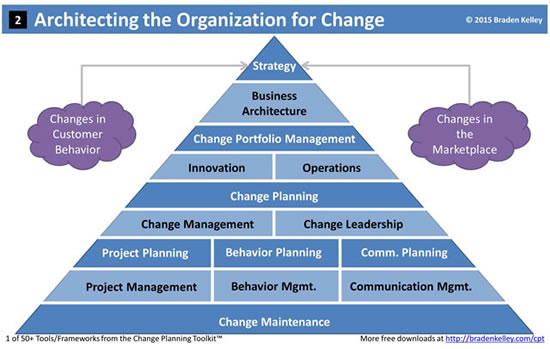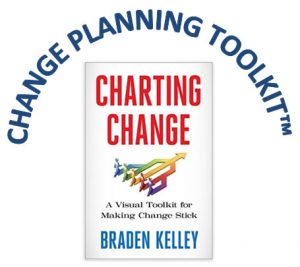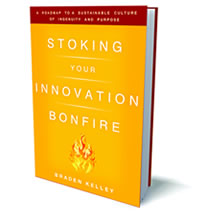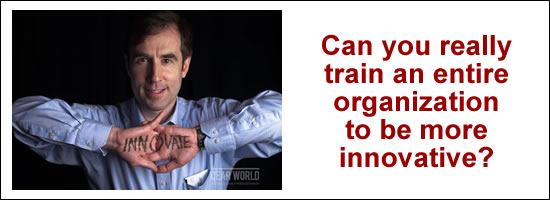
GUEST POST from Janet Sernack
I often wonder why some people procrastinate by delaying, postponing, or avoiding solving problems, or by withdrawing from making smart decisions, taking calculated risks, or taking intelligent actions?
- Why do they become paralyzed and unable to take the actions necessary to solve some of their key problems?
- Why do they often resist making even the most necessary changes to support the delivery of their creative solutions?
- Why do so many also avoid taking personal responsibility and being accountable towards achieving their desired outcomes and goals?
- Why do people disengage, even when the situation or problem may be critical to their own, their teams, or their organizations success?
Despite knowing that there may be a range of negative consequences for procrastinating, involving a crippling, overwhelming, and paralyzing combination of reactive responses?
Which then typically impacts negatively on people’s self-efficacy and self-belief, self-worth, and self-esteem and diminishes their motivation, disengages them and immobilizes their ability to take the necessary actions and as a result, spiral downwards?
How do we help people overcome procrastination?
- Why is this important?
It seems that procrastination is a challenge we and many others have faced at one point or another, where we struggle with being indecisive, delaying, ignoring, avoiding taking actions to initiate, progress, or completing tasks that may be important to us, as well as on issues that really matter to us, our teams, partners and organizations.
Ultimately leading to failures, and an inability to mitigate risks, or be creative and inventive and decreasing possibilities for innovation and increasing engagement, productivity, and improving performance.
Also potentially leading to feelings of loss, insecurity, inadequacy, frustration, disengagement, and depression and in extreme cases, client, project failures and job losses, and even burnout!
Why do people procrastinate?
- The need for security and self-protection is the key root causes of procrastination
Procrastination is most often a self-protection strategy, a way of defending ourselves, rooted in fears that result in anxieties around feeling unsafe, vulnerable, and being judged or punished, especially in times of uncertainty, unpredictability, uncontrollability, and when feeling overwhelmed.
In most organizational contexts, procrastinators are likely to respond be risk-averse by:
- Being apprehensive and even withdrawing energetically (dis-engaging) from people as well as from the creative conversation, coupled with a lack of commitment to the change process or towards achieving the agreed goal (lacking conviction and being worried about the future).
- Not showing up and spending a lot of time and energy zigzagging around and away from what they feel is consuming them or making them feel threatened or uncomfortable (avoidance).
- Blaming external people and factors for not “allowing” them to participate or succeed (time, workload, culture, or environment).
- Denying that achieving the goal really matters, bringing up excuses, and reasonable reasons about why having the goal doesn’t really matter to them, as well as a willingness to take risks (non-committal).
- Being fearful of the future, dreading what might be the range of possible negative and overwhelming events and situations (pessimism).
What are the key signals of an effective procrastinator?
The first step in noticing the key signals is to tune into our own, and peoples’ effective avoidance default pattern as to what is really going on from a systemic perspective.
By paying deep attention, and being non -judgmental and non evaluative to the range of signals outlined as follows:
Behavior Signals
- “Playing it safe” or “being nice” by being unwilling to challenge and be challenged.
- Resisting any change efforts, disengaging, and being reluctant to disclose and share authentically what is really going on for them.
- Unwillingness to take risks.
- Shying away from engaging with their partners, families, colleagues, group activities, and from having candid conversations.
- Being overtly indecisive and non-committal.
Neurological State Signals
- Increased anxiety and “attention deficit” syndrome.
- Low motivation and self-confidence.
- Diminished ability to self-regulate and self-control.
- Diminished self-efficacy and self-concept.
- Onslaught of the creeping doubts and the imposter syndrome.
Extrinsic or Environmental Signals Occur When Fearful of Perception of Others
- Performing poorly, making mistakes, or failing.
- Fearful of doing too well, or in being too successful.
- Losing control, status, or role.
- Looking stupid, or being disapproved of.
- Avoids conflict situations.
Fear of Success Signals
Some of us are unconsciously afraid of success, because irrationally we secretly believe that we are not worthy of it and don’t deserve it, and then self-sabotage our chances of success!
- Being shy, introverted, and uncomfortable in the spotlight.
- Being publicly successful brings social or emotional isolation.
- Alienating peers as a result of achievement.
- People may think you’re self-promoting.
- Being perceived as a “tall poppy”.
- Believing that success may not be all it’s cracked up to be, and that it might change you, but not for the better.
Fear of Failure Signals
Some people’s motivation to avoid failure often exceeds their motivation to succeed, which can cause them to unconsciously sabotage their chances of success.
- Cognitive biases or irrational beliefs act as filters distorting reality.
- Past pains felt from being vulnerable, abandoned, punished, blamed, or shamed in front of others, or of being disapproved of, envied, rejected, or disliked by others.
- Fearful of looking “bad” or incompetent, in front of others.
- Feeling threatened, a sense of danger or potential punishment, causing them to move away (freeze, fight, take flight) from confronting dangerous, painful situations as threatening.
Overcoming Procrastination Tips
- Co-create a safe, compassionate, and collaborative relationship
As most people find safety in procrastination at some point in time, to be an effective leader, manager, or coach in these situations, it’s important to be empathic and compassionate and “work with” where they may be coming from in terms of underlying self-beliefs:
- “I don’t want to get hurt”.
- “I don’t want to expose myself to risk”.
As well as respond constructively to their thoughts about how others may see them including:
- Lacking confidence,
- Hesitant.
Noticing how they may perceive themselves:
- “I am nowhere near as good as I should be”.
- “I am inadequate.”
Then by paying deep attention, and being intentional in co-creating a safe creative, and collaborative conversation that builds safety, permission, rapport, and trust by being:
- Gentle and non-threatening, being both kind and courageous,
- Aware of being both too direct, fast, and too laid back.
- Providing gentle guiding, assurance, and lots of patience.
- Focused on encouraging engagement, commitment, and confidence towards setting and achieving the desired outcome.
Ultimately enabling and equipping people to overcome procrastination creates openings and thresholds for learning and growth, to become the best person, to themselves and others, they can possibly be, and achieve the changes they wish to make in the world.
Find out about The Coach for Innovators Certified Program, a collaborative, intimate, and deep personalized innovation coaching and learning program, supported by a global group of peers over 8-weeks, starting May 2022. It is a blended learning program that will give you a deep understanding of the language, principles, and applications of a human-centered approach to innovation, within your unique context. Find out more.
Contact us now at mailto:janet@imaginenation.com.au to find out how we can partner with you to learn, adapt, and grow your business, team and organisation through disruption.
Image credit: Unsplash
![]() Sign up here to get Human-Centered Change & Innovation Weekly delivered to your inbox every week.
Sign up here to get Human-Centered Change & Innovation Weekly delivered to your inbox every week.





 Innovation is not a solo activity. While the rare lone genius may be able to invent something on their own (although still always inspired by others), nobody can innovate by themselves. Innovation, by its very nature, requires collaboration.
Innovation is not a solo activity. While the rare lone genius may be able to invent something on their own (although still always inspired by others), nobody can innovate by themselves. Innovation, by its very nature, requires collaboration. What does an innovation coach look like?
What does an innovation coach look like?



